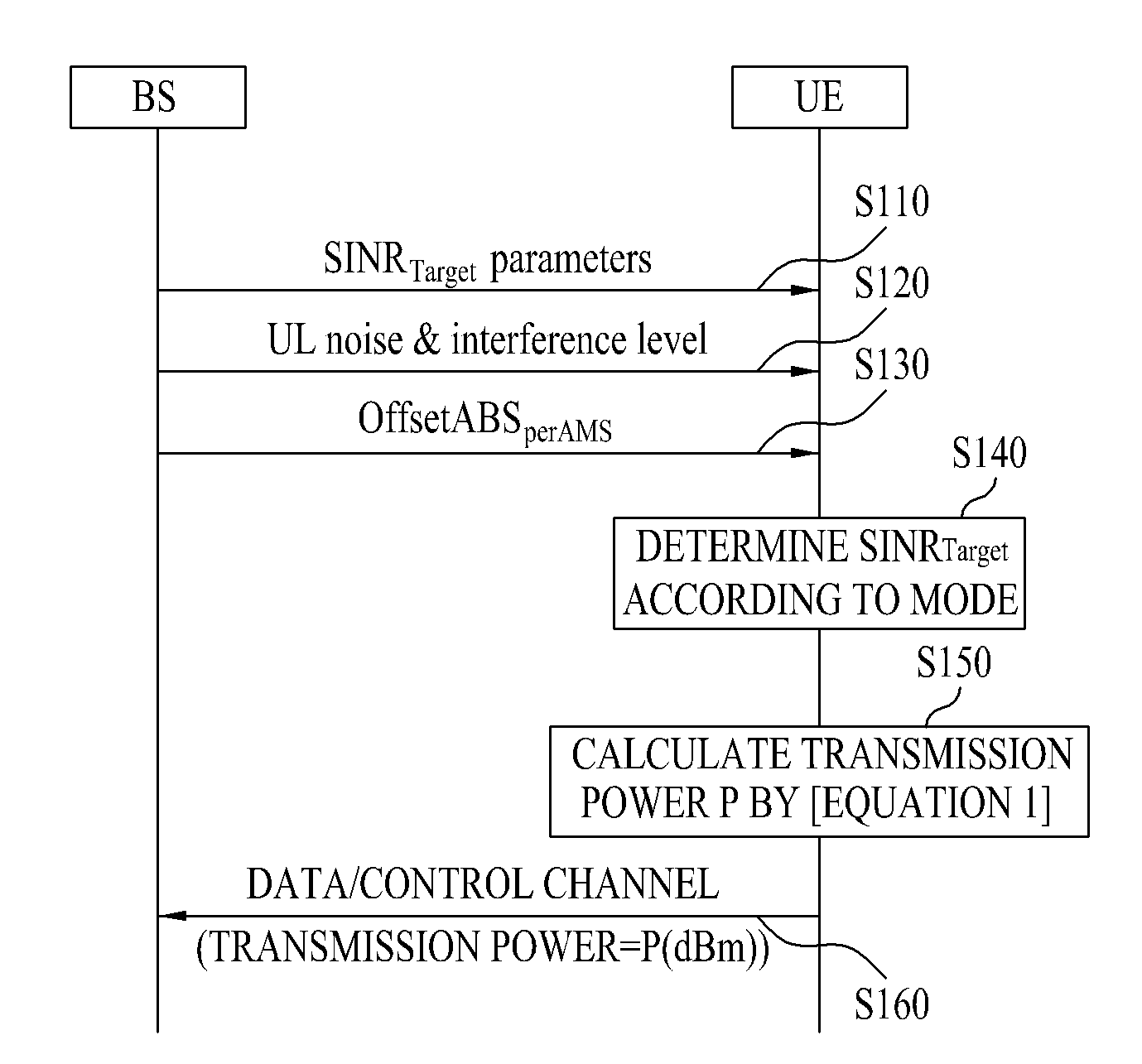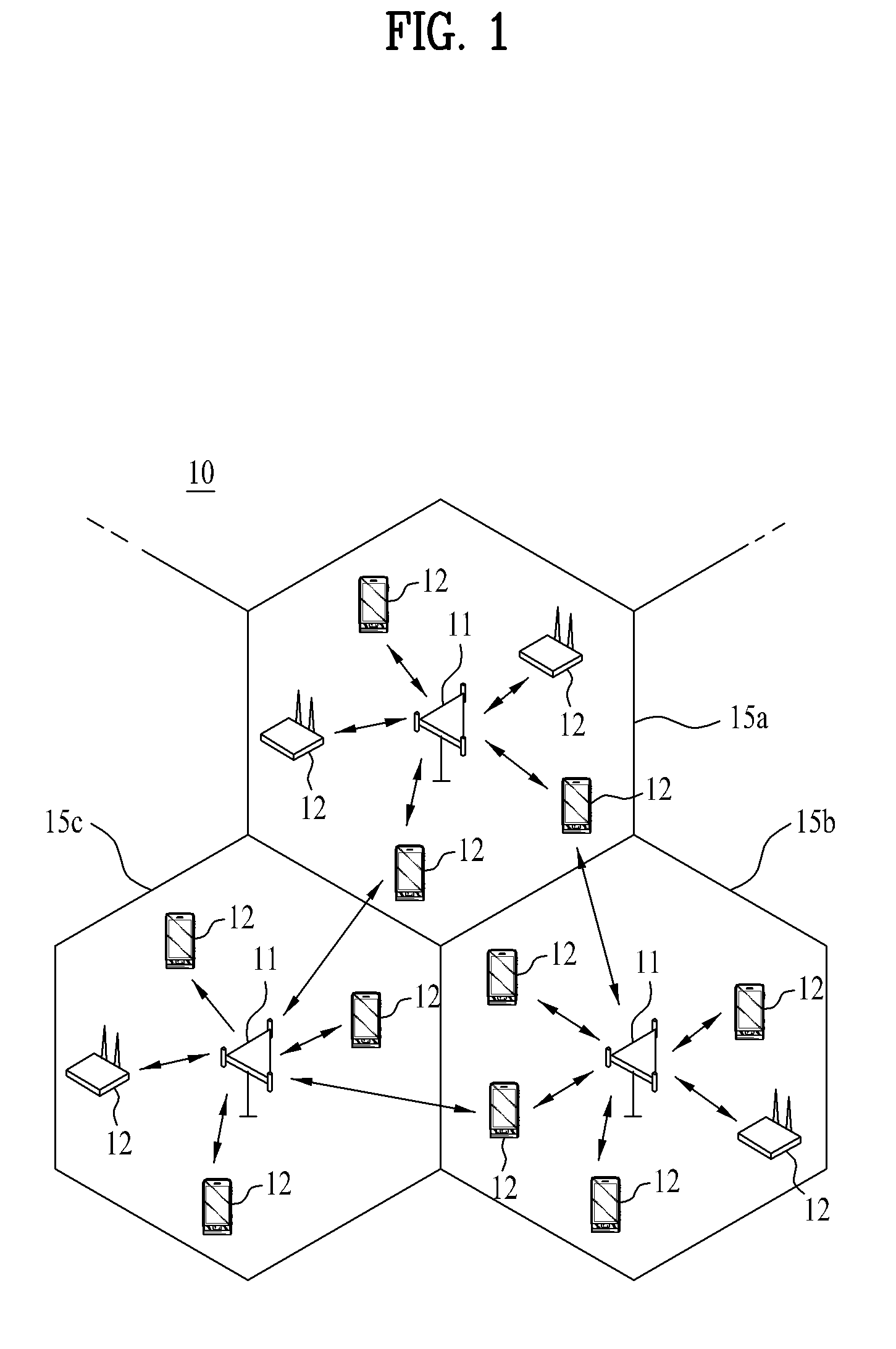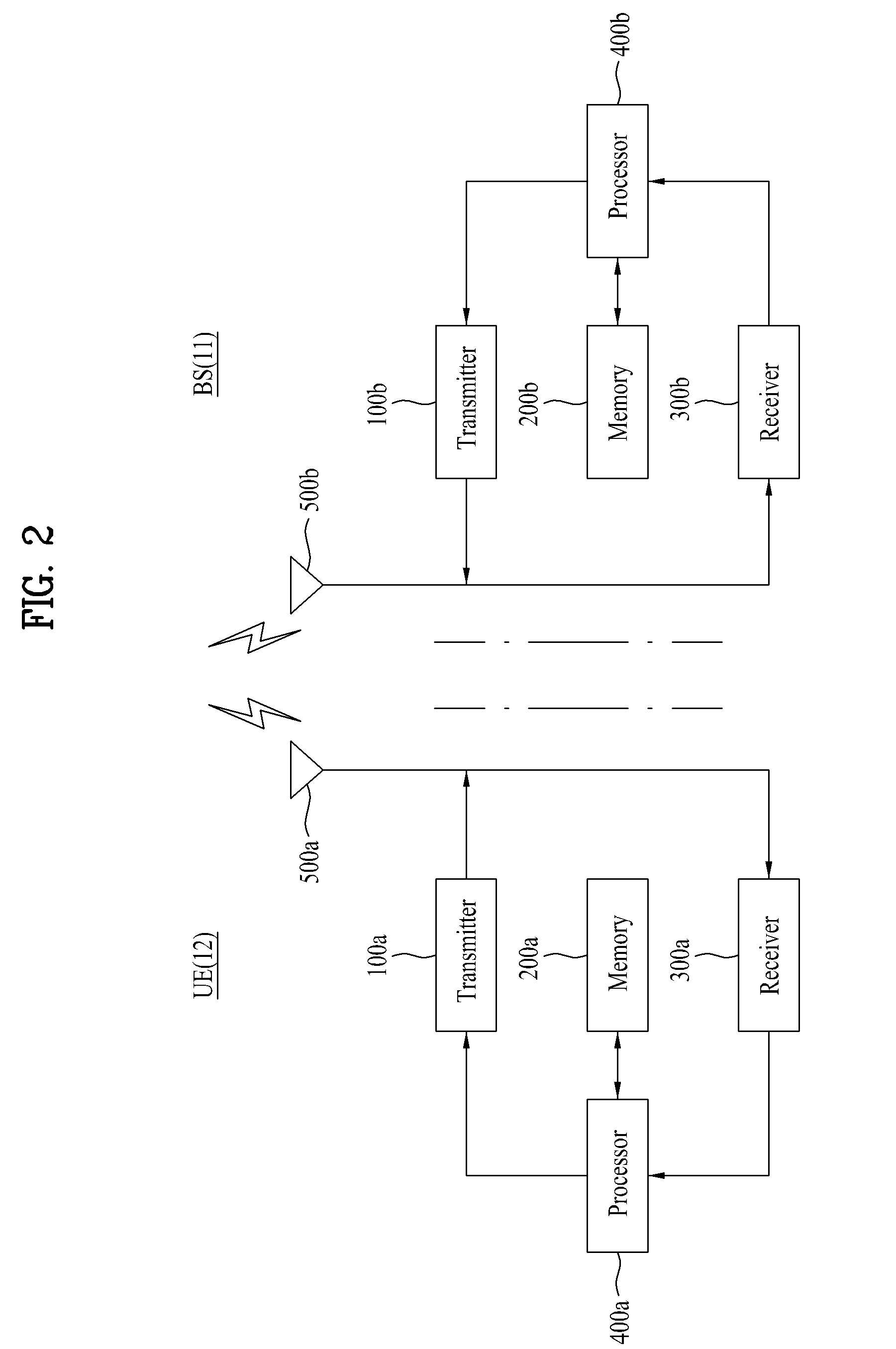Method and apparatus for controlling uplink power in a wireless communication system
a wireless communication system and uplink power technology, applied in the field of wireless communication, can solve the problems of complex and difficult determination of the c/n of each transmission channel, greatly affected ues at the cell edge, and achieve the effect of maintaining the stability of the channel environment and improving the qos of the wireless communication system
- Summary
- Abstract
- Description
- Claims
- Application Information
AI Technical Summary
Benefits of technology
Problems solved by technology
Method used
Image
Examples
Embodiment Construction
Reference will now be made in detail to the preferred embodiments of the present invention, examples of which are illustrated in the accompanying drawings.
FIG. 1 is a block diagram of a wireless communication system.
Referring to FIG. 1, a wireless communication system 10 includes at least one Base Station (BS) 11. Each BS 11 provides communication service to User Equipments (UEs) 12 within a specific geographical area (generally called a cell) 15a, 15b or 15c covered by the BS 11. The cell may be further divided into a plurality of areas called sectors. The UEs 12 may be mobile or fixed devices that transmit and receive user data and / or control information to and from the BS 11. The term “UE” is interchangeable with the terms “Mobile Station (MS)”, “Mobile Terminal (MT)”, “User Terminal (UT)”, “Subscriber Station (SS)”, “wireless device”, “Personal Digital Assistant (PDA)”, “wireless modem”, “handheld device”, etc. The BS 11 is usually a fixed station that communicates with the UEs ...
PUM
 Login to View More
Login to View More Abstract
Description
Claims
Application Information
 Login to View More
Login to View More - R&D
- Intellectual Property
- Life Sciences
- Materials
- Tech Scout
- Unparalleled Data Quality
- Higher Quality Content
- 60% Fewer Hallucinations
Browse by: Latest US Patents, China's latest patents, Technical Efficacy Thesaurus, Application Domain, Technology Topic, Popular Technical Reports.
© 2025 PatSnap. All rights reserved.Legal|Privacy policy|Modern Slavery Act Transparency Statement|Sitemap|About US| Contact US: help@patsnap.com



